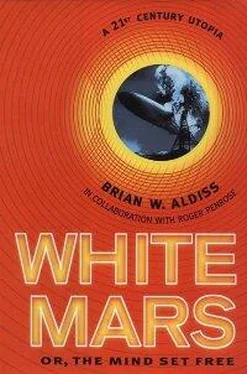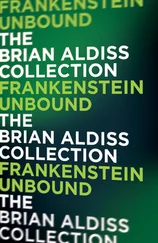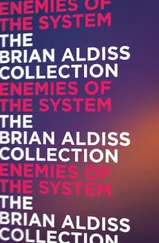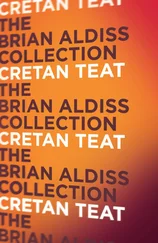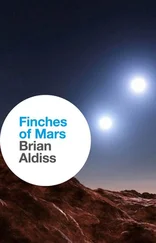Brian Aldiss - White Mars
Здесь есть возможность читать онлайн «Brian Aldiss - White Mars» весь текст электронной книги совершенно бесплатно (целиком полную версию без сокращений). В некоторых случаях можно слушать аудио, скачать через торрент в формате fb2 и присутствует краткое содержание. Год выпуска: 1999, ISBN: 1999, Издательство: Little, Brown UK, Жанр: Фантастика и фэнтези, на английском языке. Описание произведения, (предисловие) а так же отзывы посетителей доступны на портале библиотеки ЛибКат.
- Название:White Mars
- Автор:
- Издательство:Little, Brown UK
- Жанр:
- Год:1999
- ISBN:0-316-85243-0
- Рейтинг книги:5 / 5. Голосов: 1
-
Избранное:Добавить в избранное
- Отзывы:
-
Ваша оценка:
- 100
- 1
- 2
- 3
- 4
- 5
White Mars: краткое содержание, описание и аннотация
Предлагаем к чтению аннотацию, описание, краткое содержание или предисловие (зависит от того, что написал сам автор книги «White Mars»). Если вы не нашли необходимую информацию о книге — напишите в комментариях, мы постараемся отыскать её.
White Mars — читать онлайн бесплатно полную книгу (весь текст) целиком
Ниже представлен текст книги, разбитый по страницам. Система сохранения места последней прочитанной страницы, позволяет с удобством читать онлайн бесплатно книгу «White Mars», без необходимости каждый раз заново искать на чём Вы остановились. Поставьте закладку, и сможете в любой момент перейти на страницу, на которой закончили чтение.
Интервал:
Закладка:
Kathi stopped. Then she spoke rather abstractedly. “Imagine the drama of it! The world seemed to be on the brink of a great discovery. Would they be able to trace the Higgs through the LHC? The equipment was finally up and running in about 2005. A year later, it began to reach the kind of energy levels at which it seemed possible that they might actually detect the Higgs particle. This was at the lower end of the scale of theoretical possibilities for the Higgs mass. So the fact that they found no clear candidate they could identify with the Higgs did not unduly worry the physicists.”
We stood in that unnatural place, staring at our boots.
“Do you think the day will come when we can understand everything?” I asked.
Kathi grunted. Without giving an answer, she continued with her account.
“There had never been any guarantee that the LHC could build to the energies required to find the elusive particle—unlike the potential of the scrapped SSC.”
“So more money was wasted…”
“Can you not understand that science—like civilisation, of which science is the backbone—is pieced slowly together from ambitions, mistakes, perceptions—from our faltering intelligences? Patient enquiry, that’s it. One day, one day far ahead in time, we may understand everything. Even the workings of our own minds!”
I remembered something I had been taught as a child. “But Karl Popper said that the mind could not understand itself.”
“With mirrors we may easily do what was once impossible, and see the back of our own heads. One step forward may be formed from a number of tiny increments. For example, the hunt for this elusive smudge has been facilitated by the seemingly trivial innovation of self-illuminating paper—ampaper—and 3D-paper. Their impact on scientific development has been incalculable.”
“So they did find the Higgs particle at some point?” I asked.
“By 2009, the entire energy range of conceivable relevance to the Higgs particle had been surveyed. No unambiguously identifiable Higgs was found. But what the physicists did find was at least as interesting.”
We had continued our walk. As we reached the crest of a small incline, Kathi said, “More of this later. We are nearly there!”
Over the crest, the desolation was broken by tokens of human activity. A group of suited men stood by three parked buggies. Their attention was directed towards a vast silvery tube, above which was suspended something which immediately reminded me of an immense saucepan lid. This lid evidently afforded protection against any slight aerial bombardment—any falling meteorite—for the tube below.
The men hailed us, and as we drew nearer to them I could see that this protective lid was of meshed reinforced plastic. Below it lay a large inflated bag from which cables trailed. In the background were sheds from which the sound of a generator came.
The importance of this installation was emphasised by a metal version of the UN flag, which was now raised on an extemporised flagpole.
Dreiser Hawkwood beckoned us on. His face behind its helmet appeared darker than ever. He briefly embraced Kathi, both of them clumsy in their suits, before shaking my hand in a perfunctory way. I was Kathi’s guest, not his. Among the men in the background, I saw Jon Thorgeson, whose lecture I had postponed while I was pregnant.
Climbing on to a metal box, Dreiser raised himself above us to make a short speech.
“This is such a momentous day, I thought we might hold a small ceremony. It’s to mark the occasion when, at last, the bag is completely filled. It has been a slow process. As you will know, we have had to avoid the possibility of setting up currents in the superfluid. But from this moment onwards, we are able to begin in earnest our search for the Omega Smudge.”
Pausing, he reached up to stroke his moustache but had to make do with stroking his visor instead.
“Jon and I were having an argument, although out here is not the best place for it. We were arguing about something hard to define—‘consciousness’. Jon’s hard-line view is that consciousness emanates from the interaction of brute computation, quantum coherence, quantum entanglement, if you like, and quantum state reduction—those factors which produce a CPS, a sure indicator of mind. Many people—and our quantputers—would agree with him. He claims that science is ‘nearly there’—and will arrive there before long, in these areographic wastes. Is that a fair description of your position, Jon?”
Thorgeson said, “Approximately.”
“Kathi and I take a more radical view. We see that, indeed, there are still some minor issues to be sorted out from the details of the particle physics, primarily the Smudge parameters. They will determine all the present unknowns. However, we radicals—I prefer the term visionaries—argue that something profound is still missing.”
“Yes,” said Kathi. “And we believe that magneto-gravitic fields will turn out to be part of the missing story of that profundity.”
Dreiser continued briefly in this vein, before embarking on a different topic.
“You’ll all have made use of the Ng-Robinson Plot? Let’s just have a thought for that vital minor innovation! It was named after its inventors, Ng being a Singaporean and Robinson British. This was East meeting West—very fruitfully. The Plot has given us a wonderful method of displaying vast quantities of quantputer-generated information. At the time when it was first employed, supercomputers were already giving place to our QPs, or quantputers, to use their full name—much faster and more versatile machines. The computer read off the mass of a particle along one axis, its lifetime along another, and the g-factor along a third, all colour-coded according to the various quantum numbers possessed by the particle in question—charge, spin, parity, etc.
“And one of the crucial features Ng-Robinson introduced is a key intensity factor which indicates the probability of the detection being a reliable one. A very sharp bright image indicates firm identification of a particle, while a fuzzy one implies there may be some considerable uncertainty as to the suggested identification of an actual particle.
“The essentials of so many lines of research, which in earlier times would have presented great difficulties, become immediately transparent. The Ng-Robinson Plot has proved extremely valuable in experimental particle physics, because a lot of that activity consists of sniffing out tiny subtle effects from enormous amounts of almost entirely irrelevant information!
“What they expected for the Higgs would have been one sharp, bright, and very white spot. That’s according to the conventions used in this system of colour-coding. It should have stood out clearly from a background of variously coloured spots in other places in the generally dark background of the N-R Plot. These other spots would indicate the complex array of particles of different kinds generated by the experiment. Show the vidslide, Euclid.”
At this point, an android stepped forward to project a replica of the plot. It sparkled before the small audience with its dark pointillism. It could have been mistaken for a glimpse of another universe.
Dreiser asked, “What did they see in place of a spot? They saw a smudge. Just a smudge. It arose around about the right place, pretty precisely where the particle physicists had come to expect that something would be found—which would be consistent with all the other junk observed earlier. But there was no clear-cut Higgs particle—merely a great big Higgs smudge!
“And the ultimate descendant of that smudge is what we hope to capture—one day, starting from now!”
We all clapped. Even Euclid clapped.
Читать дальшеИнтервал:
Закладка:
Похожие книги на «White Mars»
Представляем Вашему вниманию похожие книги на «White Mars» списком для выбора. Мы отобрали схожую по названию и смыслу литературу в надежде предоставить читателям больше вариантов отыскать новые, интересные, ещё непрочитанные произведения.
Обсуждение, отзывы о книге «White Mars» и просто собственные мнения читателей. Оставьте ваши комментарии, напишите, что Вы думаете о произведении, его смысле или главных героях. Укажите что конкретно понравилось, а что нет, и почему Вы так считаете.
